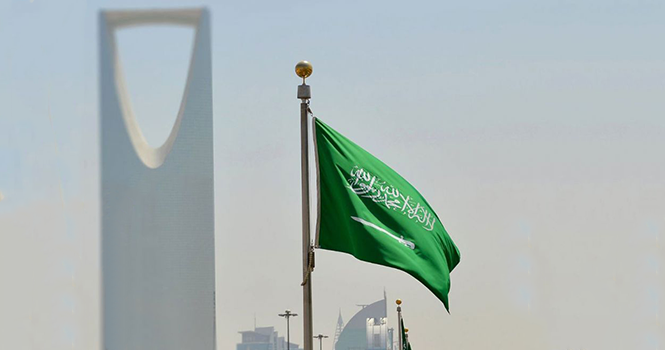Key Rating Drivers
Balance Sheet Strength: Saudi Arabia’s ratings reflect its strong fiscal and external balance sheets, with government debt/GDP and sovereign net foreign assets (SNFA) considerably stronger than both the ‘A’ and ‘AA’ medians, and significant fiscal buffers in the form of deposits and other public sector assets. Oil dependence, low World Bank governance indicators and vulnerability to geopolitical shocks have improved but remain relative weaknesses. Deep and broad social and economic reforms implemented under Vision 2030 are diversifying economic activity, albeit backed by large public spending.
Robust External Finances: Reserve coverage of current external payments was 14.4 months in 2024 (‘A’ median 1.9 months) and SNFA 63.7% of GDP (‘A’ median 8.7%). Gross FX reserves increased in 2024 amid a small current account surplus (estimated by Fitch at 0.2% of GDP) and strong net inflows through the financial account. Fitch expects current account deficits in 2025 and 2026 (averaging 2.4%) as lower oil prices reduce oil revenues (despite higher production as Opec+ cuts are gradually unwound) and import growth, driven by project execution, stays strong. Growth in non-oil exports will be robust and the services deficit should continue narrowing, given strong growth in travel and tourism
Weakening in External Balance Sheet: With domestic sources of financing insufficient to meet the needs of the economy, we expect continued large recourse to external borrowing. There is also likely to be less acquisition of foreign assets to reflect the government’s commitment to greater domestic investment. As a result, we expect a modest decline in SNFA over our forecast period to 52.5% of GDP in 2026. We forecast the net external creditor position to weaken to 7% of GDP by 2026 from 23.7% in 2024, but this will also remain a strength relative to peers (projected peer median 3.5%).
2024Budget Deficit Above Target: The 2024 budget deficit is officially estimated at 2.8% of GDP, up from 2% in 2023 as spending growth outpaced that of revenues, with the latter held back by oil revenues due to lower production in line with Opec+ commitments. Fitch estimates the fiscal breakeven oil price at USD96/b in 2024 and forecasts a widening in the deficit in 2025 to 3.8% of GDP, driven by lower oil revenues (budget target 2.3%).
Wider Budget Deficits: This reflects our forecast that oil prices will fall (Brent crude is forecast to fall to USD70/b in 2025 and USD65/b in 2026) and Fitch’s expectation that the Aramco extraordinary dividend (distributed in 2023 and 2024 but not budgeted for 2025) will not reoccur. Expenditure is projected to fall due to a cut in capex (boosted in 2024 by one-time land acquisition) and associated current spending.
The medium-term fiscal projections in the budget show a rising deficit (to 2.9% in 2026 and 3% in 2027) and are above those from the 2024 budget (2.3% for 2026), continuing the trend of upward revision. Fitch projects a deficit of 3.9% in 2026. The authorities view the deficits as a policy choice with capex comfortably above their and Fitch’s deficit projections over the forecast period. A regular project recalibration exercise has resulted in a scaling back and resequencing of certain projects and gives Fitch some confidence in the ability to adjust investment spending in the event of lower oil prices.
Strong Government Balance Sheet: Fitch projects government debt/GDP to rise to 35.3% of GDP by end-2026, up from 29.8% at end-2024, but still well below the projected peer median of 55.1%. We estimate that government deposits at Saudi Central Bank (SAMA), comprising the government current account and the fiscal reserve, were 10.3% of GDP at end-2024. Contingent liabilities are rising as government-related entities (GRE), particularly the Public Investment Fund (PIF), step up borrowing, but are dwarfed by GRE assets (PIF debt was 4.4% of its assets at end-3Q24).
Oil Lifting Headline Growth: Headline economic growth is set to rebound in 2025 after being held back by cuts to oil production agreed by Opec+. The flash estimate put real GDP at 1.3% in 2024, with the oil sector contracting by 4.5%. Oil production is projected to move broadly in line with the Opec+ agreement from December 2024, meaning an expansion in the oil sector of 2.7% in 2025 and 6.4% in 2026.
Strong and Resilient Non-oil Growth: Non-oil GDP growth drivers appear robust, diverse and resilient to the decline in oil prices Fitch projects over its forecast period. It will be underpinned by strong reform momentum and GRE and government capex, which will push gross fixed capital formation toward a long-term high of 30% of GDP. Non-oil growth was 4.3% in 2024, led by wholesale and retail trade, transport and construction.
For the full commentary please access the link here.








